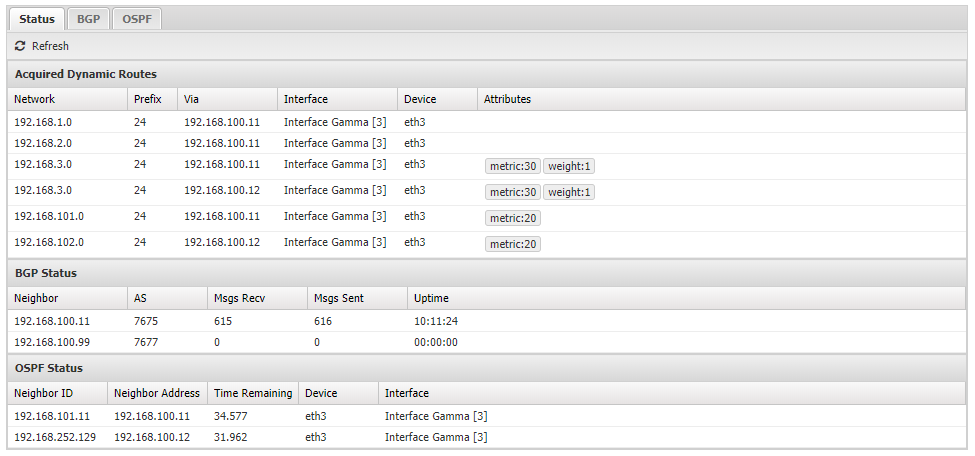Dynamic Routing: Difference between revisions
No edit summary |
|||
| (14 intermediate revisions by 3 users not shown) | |||
| Line 1: | Line 1: | ||
<span style="display:none" class="helpSource | <span style="display:none" class="helpSource network_dynamic_routing">Dynamic_Routing</span> | ||
<span style="display:none" class="helpSource | <span style="display:none" class="helpSource network_advanced_dynamic_routing">Dynamic_Routing</span> | ||
<span style="display:none" class="helpSource network_advanced_dynamic_routing_status">Dynamic_Routing</span> | |||
<span style="display:none" class="helpSource network_advanced_dynamic_routing_bgp">Dynamic_Routing</span> | |||
<span style="display:none" class="helpSource network_advanced_dynamic_routing_bgp_neighbors">Dynamic_Routing</span> | |||
<span style="display:none" class="helpSource network_advanced_dynamic_routing_bgp_networks">Dynamic_Routing</span> | |||
<span style="display:none" class="helpSource network_advanced_dynamic_routing_ospf">Dynamic_Routing</span> | |||
<span style="display:none" class="helpSource network_advanced_dynamic_routing_ospf_networks">Dynamic_Routing</span> | |||
<span style="display:none" class="helpSource network_advanced_dynamic_routing_ospf_areas">Dynamic_Routing</span> | |||
<span style="display:none" class="helpSource network_advanced_dynamic_routing_ospf_interfaces">Dynamic_Routing</span> | |||
<span style="display:none" class="helpSource network_advanced_dynamic_routing_ospf_advanced_options">Dynamic_Routing</span> | |||
== About Dynamic Routing == | == About Dynamic Routing == | ||
Dynamic Routing allows for the exchange of routes between other routers using BGP and OSPF | Dynamic Routing allows for the exchange of routes between other routers using Border Gateway Protocol (BGP) and Open Shortest Path First (OSPF). | ||
Dynamic Routing settings can be found at '''Config > Network | Dynamic Routing settings can be found at '''Config > Network > Dynamic Routing'''. | ||
=== BGP Overview === | |||
The Border Gateway Protocol (BGP) requires that all nodes known as ''neighbors'' are known and added to the settings. | |||
=== OSPF Overview === | |||
=== | Open Shortest Path First (OSPF) does not require all nodes to be known. Instead each route is associated with a group called an ''area''. OSPF can be hierarchical through the use of multiple areas so some networks are publicly known and others can be private. Additionally OSPF supports authentication. | ||
---- | ---- | ||
== Settings == | == Settings == | ||
| Line 31: | Line 35: | ||
* '''Status''': Overall status of dynamic routing shows: | * '''Status''': Overall status of dynamic routing shows: | ||
:*''' | :*'''Acquired Dynamic Routes''': All routes obtained from enabled dynamic routing protocols. | ||
:*'''BGP Status''' Information about each BGP neighbor including messages received, sent, and uptime. | :*'''BGP Status''' Information about each BGP neighbor including messages received, sent, and uptime. | ||
:*'''OSPF Status''' Information about discovered OSPF | :*'''OSPF Status''' Information about discovered OSPF neighbor such as their IP address and the time remaining until they next synchronize. | ||
[[Image:dynamic_routing_status.png|center|frame|Dynamic Routing Status]] | [[Image:dynamic_routing_status.png|center|frame|Dynamic Routing Status]] | ||
* '''BGP''': Enable BGP protocol. | * '''BGP''': Enable BGP protocol. | ||
* '''Router ID''': An IP-like identifier. It can be any IP-address like value but is typically your WAN address. | |||
* '''Router AS''': The Autonomous System (AS) number for this system. It can be any number from 1-65535 but must be unique in your BGP network. | |||
[[Image:dynamic_routing_bgp.png|center|frame|Dynamic Routing BGP]] | |||
:*'''Neighbors''' Define each BGP neighbor here. For each neighbor, you will need to know their IP address and AS. | |||
* ''' | :*'''Networks''' Define each local network route to share via BGP. | ||
* '''OSPF''': Enable OSPF protocol. | |||
: | [[Image:dynamic_routing_ospf.png|center|frame|Dynamic Routing OSPF]] | ||
:*''' | :*'''Networks''' Define each local network route to share via OSPF. | ||
:*'''Areas''' Define OSPF areas. The default area 0.0.0.0 is already defined. It may be modified and others may be added as needed for your network. | |||
:*'''Interface Overrides''' Under certain conditions you may need to override default settings for OSPF interfaces. Most notably, if you wish to enable authentication on an area you will need to specify the type of authentication on a specific interface. | |||
:*'''Advanced Options''' Here you can override OSPF defaults. | |||
Latest revision as of 15:55, 12 September 2024
About Dynamic Routing
Dynamic Routing allows for the exchange of routes between other routers using Border Gateway Protocol (BGP) and Open Shortest Path First (OSPF).
Dynamic Routing settings can be found at Config > Network > Dynamic Routing.
BGP Overview
The Border Gateway Protocol (BGP) requires that all nodes known as neighbors are known and added to the settings.
OSPF Overview
Open Shortest Path First (OSPF) does not require all nodes to be known. Instead each route is associated with a group called an area. OSPF can be hierarchical through the use of multiple areas so some networks are publicly known and others can be private. Additionally OSPF supports authentication.
Settings
This section reviews the different settings and configuration options available for Dynamic Routing.
- Dynamic Routing Enabled: Controls whether dynamic routing is enabled or disabled. The default setting is unchecked, which means dynamic routing is disabled. BGP and/or OSPF must also be enabled as well.
- Status: Overall status of dynamic routing shows:
- Acquired Dynamic Routes: All routes obtained from enabled dynamic routing protocols.
- BGP Status Information about each BGP neighbor including messages received, sent, and uptime.
- OSPF Status Information about discovered OSPF neighbor such as their IP address and the time remaining until they next synchronize.

- BGP: Enable BGP protocol.
- Router ID: An IP-like identifier. It can be any IP-address like value but is typically your WAN address.
- Router AS: The Autonomous System (AS) number for this system. It can be any number from 1-65535 but must be unique in your BGP network.

- Neighbors Define each BGP neighbor here. For each neighbor, you will need to know their IP address and AS.
- Networks Define each local network route to share via BGP.
- OSPF: Enable OSPF protocol.

- Networks Define each local network route to share via OSPF.
- Areas Define OSPF areas. The default area 0.0.0.0 is already defined. It may be modified and others may be added as needed for your network.
- Interface Overrides Under certain conditions you may need to override default settings for OSPF interfaces. Most notably, if you wish to enable authentication on an area you will need to specify the type of authentication on a specific interface.
- Advanced Options Here you can override OSPF defaults.